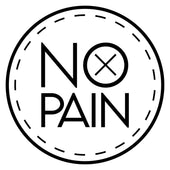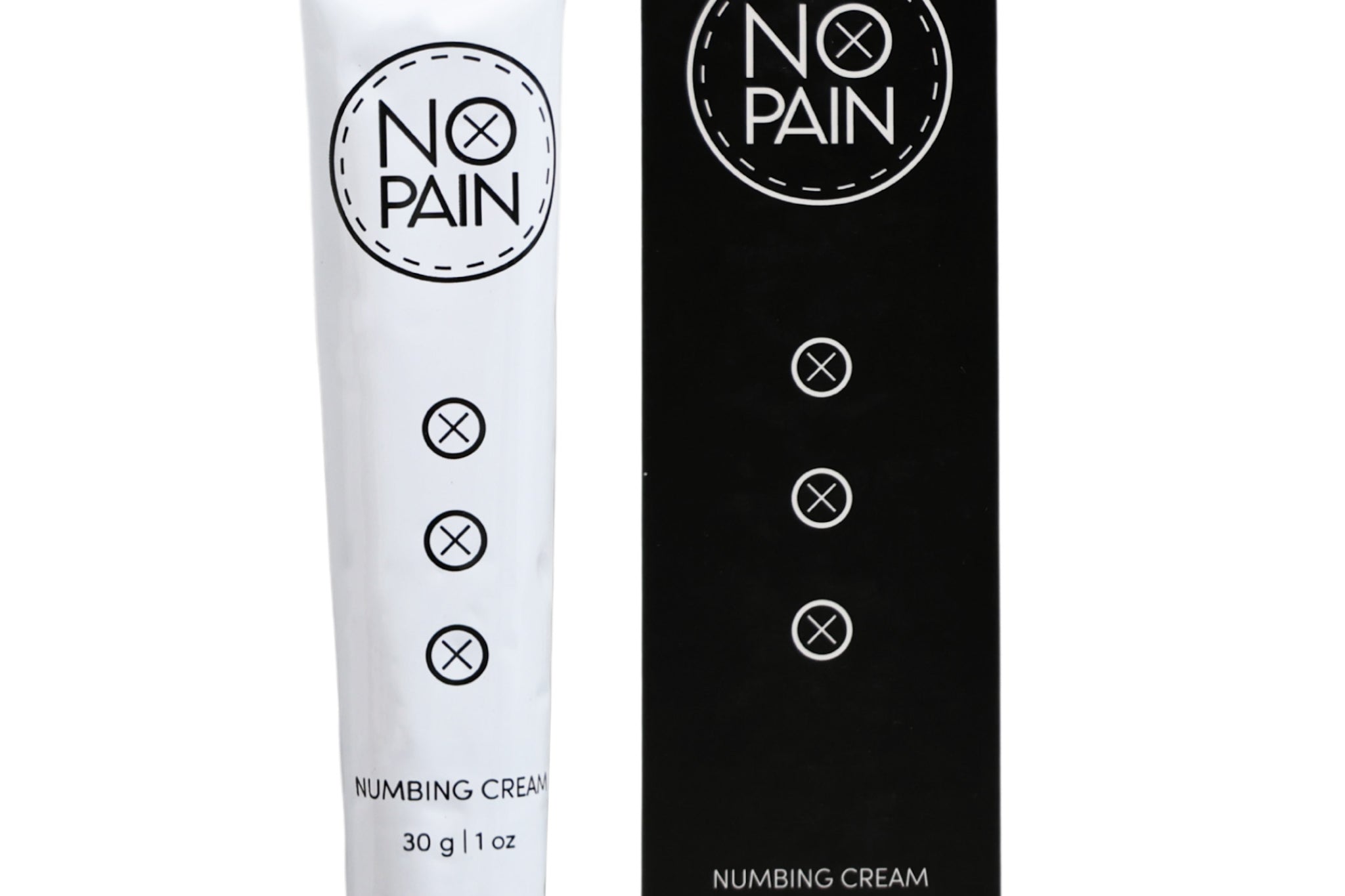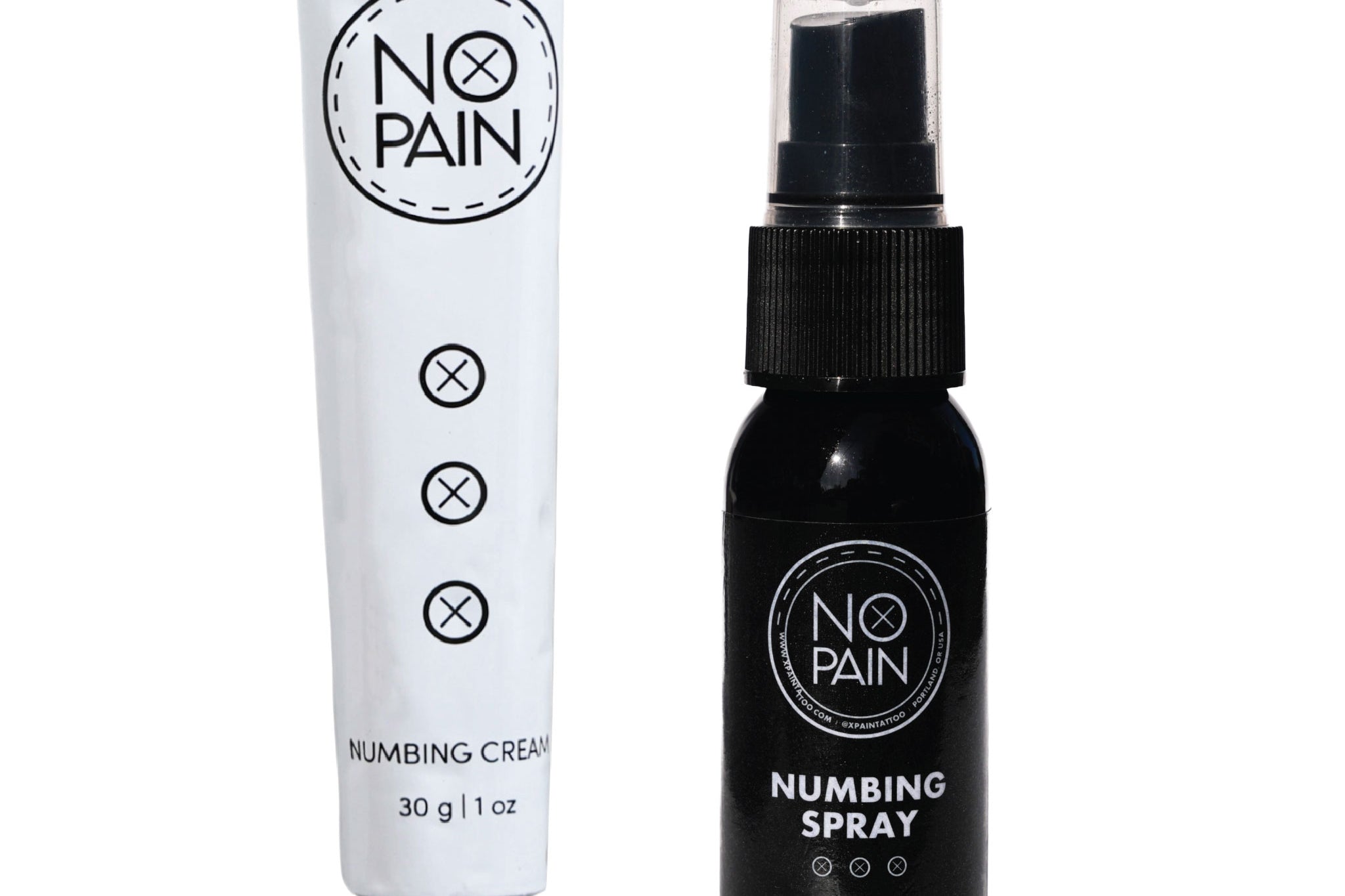Why "What's the Best Tattoo Numbing Cream?" is a Critical Question
The single biggest factor that stops people from getting their dream tattoo isn't the cost or the permanence—it's the fear of pain. The anxiety before a first tattoo is often just a fear of the unknown, specifically, "how bad do tattoos hurt?" This apprehension can prevent someone from booking their appointment or cause them to tap out of a long tattoo session early.
This is where a high-quality tattoo numbing cream has completely changed the game. It’s no longer necessary to "tough it out." A powerful topical anesthetic can make the entire experience comfortable, calm, and focused on the art, not the pain...and your tattoo artist will appreciate it almost as much as you will.
But with a market flooded with options, how do you find the best tattoo numbing cream? What separates a product that delivers a truly painless tattoo from one that fails after 20 minutes? This is your complete buyer's guide to what you must look for.

What is a Tattoo Numbing Cream and How Does it Work?
A numbing cream is a topical anesthetic applied to the skin before a procedure begins. Its purpose is to desensitize the area and provide significant pain relief for an extended period.
But how does it actually stop the pain of the tattooing process? It's a simple and effective bit of science. The numbing cream contains active ingredients that function as nerve blockers. These nerve blockers are absorbed into the skin and work by temporarily stopping the nerves in that area from sending pain signals to your brain.
Even though the needle is doing its job, your brain simply doesn't receive the "ouch" message. These powerful nerve deadeners are what allow you to sit for hours, even on notoriously painful spots like the ribs or spine, making a painless tattoo experience a reality.
The Must-Have Features: What Makes a Numbing Cream the "Best"?
Not all numbing cream products are created equal. A cheap, generic cream from a random online marketplace is not the same as a professional-grade product designed for the tattoo industry. When you're searching for the "best," it must meet four criteria.
1. The Active Ingredients (The "Engine" of the Cream)
The most important factor is what is doing the numbing. The gold standard topical anesthetic for tattoos is Lidocaine. It is a safe, effective, and well-studied local anesthetic that is perfect for this type of cosmetic procedure. Other ingredients might exist, but Lidocaine is the most reliable and trusted by the professional community. For a true deep numbing cream, Lidocaine-based active ingredients are the first thing you should look for on the label.
2. The Strength (Percentage of Lidocaine)
What's the strongest you can buy? The strength is determined by the percentage of the active ingredient. For an over-the-counter topical anesthetic to successfully manage tattoo pain it needs at least 5% Lidocaine. Any product with less than 5% (like 3% Lidocaine) will simply not be strong enough or last long enough for the trauma of a real tattoo session. Anything less won't withstand the intensity of the tattooing process.. (Related: What is Lidocaine and Why is it in Your Tattoo Numbing Cream?)
3. Hypoallergenic
Ensuring effective numbing requires the right active ingredients, but it's equally crucial to avoid certain additives. Scents, fragrances, essential oils, and harsh dyes should be omitted, as they can cause sensitivities. Thus, while the cream should contain potent numbing agents, it must also be free from ingredients that might trigger allergic reactions.
4. The Formula (Water-Based vs. Oil-Based)
This is a critical, professional-grade detail that separates the best numbing cream from the worst. Many cheap products are oil-based, which is a disaster for a tattoo artist. The oily residue makes the skin slippery, can clog the tattoo needles, and may interfere with the ink settling properly.
The best numbing cream is water-based. This type of formula absorbs cleanly into the skin and can be completely wiped away by the tattoo artist before they start, leaving a perfect, numb canvas that doesn't compromise the stencil or the ink.
How to Apply Numbing Cream for a Truly Painless Tattoo
This is the step where most people fail. You can have the best numbing cream in the world, but if you don't apply it correctly, it won't work. You cannot just rub it on five minutes before your appointment and expect a miracle.
A powerful numbing cream needs two things to work: time and occlusion.
- Time: The cream needs time to penetrate the epidermis (the top layer of skin) and reach the dermis, where the nerves live.
- Occlusion: This is the secret. You must trap the cream against your skin to force it to absorb instead of just drying in the air.
For a full breakdown of the application, you can read our guide: How to Apply Tattoo Numbing Cream for a Painless Tattoo.
The 90-120 Minute Application: Why Plastic Wrap is Essential
Here is the correct, foolproof method:
- Wash the Area: Clean the skin to remove any dirt or oils.
- Exfoliate: Gently remove dead skin cells with a silicone exfoliator or loofa. Even shaving the area will help.
- Apply a THIN Layer: Apply a very thin layer of the cream (like a regular moisturizer). Rub it in
- Apply a THICK Layer: Apply a very thick, generous layer of the numbing cream (like frosting a cake). Do not rub it in.
- Wrap with Plastic Wrap: Tightly wrap the area with plastic wrap. This is the occlusion step. The plastic wrap traps your body heat, which opens your pores and allows the topical anesthetic to absorb deeply.
- Wait 90-120 Minutes: Do not remove the wrap for at least 90 minutes before your tattoo session. This is the minimum time it takes for the nerve blockers to take full effect.
Numbing Cream vs. Numbing Spray: A Crucial Difference
Understanding your tattoo supplies is key. A numbing cream and a numbing spray are not interchangeable, but they are an incredible team.
- Tattoo Numbing Cream: This is your PRE-SESSION tool. It is applied on unbroken skin for 90-120 minutes before your session to provide deep, foundational numbness for the first 2-4 hours.
- Tattoo Numbing Spray: This is your MID-SESSION tool. A product like our No Pain Tattoo Numbing Spray is a topical anesthetic designed to be used by your artist on broken skin during the tattoo.
Mid-Session Pain Relief: The Role of a Numbing Spray
What happens if your tattoo session is 6 hours long and the cream starts to fade? That's when you use the spray. (Related: Tattoo Numbing Spray: A Guide to Mid-Session Pain Relief) It often contains epinephrine, which constricts the blood vessels to reduce swelling and prolong the numbing. This 1-2 punch is the secret to getting through a long day. (Related: What to Do if You Tap Out During a Tattoo)
Beyond Tattoos: Other Uses for Topical Anesthetic Creams
A high-quality 5% Lidocaine numbing cream isn't just for tattoos. It is highly effective for a wide range of other painful skin-level medical procedures.
Many people use a topical anesthetic for:
- Laser Hair Removal
- Permanent Makeup & Microblading
- Laser Treatment & Microneedling
- Laser Removal of tattoos (which is famously more painful than the tattoo itself)
Common Questions About Tattoo Numbing Cream (FAQ)
- Q: Will numbing cream affect my tattoo's healing? A: Not if you use a high-quality, water-based numbing cream. It is completely wiped away before the tattooing process begins and will not affect your ink or your tattoo aftercare process. (Related: A Guide to Tattoo Aftercare: The First 48 Hours)
- Q: How long does the numbing last? A: When applied correctly using the plastic wrap method, a Maximum Strength Lidocaine cream will provide deep numbness for 2-4 hours.
- Q: Are the active ingredients safe? A: Yes. Lidocaine is an FDA-approved local anesthetic that has been used for decades. Our numbing cream is for external use only and is perfectly safe when used as directed.
The Verdict: So, What is the Best Tattoo Numbing Cream?

The best tattoo numbing cream is one that meets all the professional standards:
- It has a minimum of 5% Lidocaine.
- It has a Water-Based Formula (so it won't affect the ink).
- It is specifically designed for tattoos.
This is precisely why we developed the No Pain Tattoo Numbing Cream.
It was created to be the definitive answer for tattoo pain. It is a maximum strength Lidocaine, water-based deep numbing cream that is trusted by artists and clients alike. It's designed to provide deep, long-lasting relief that allows you to sit for hours in complete comfort, turning a painful ordeal into a calm, creative experience. (Related: How to Tell if a Tattoo Studio is Clean and Safe: A Checklist)
Final Checklist Before Your Tattoo Session
You've chosen the best numbing cream. Now, remember your full tattoo care plan.
- Talk to your artist at your tattoo shop about your plan to use numbing cream.
- Have your aftercare kit ready before your appointment. Proper tattoo care starts the moment the session ends. (Related: Tattoo Aftercare Bundle)
- For long sessions, consider a bundle. The best numbing cream paired with a mid-session spray is the ultimate setup. (Related: Comfort Bundle)
Using the right numbing cream is the first and most important step to a great session. These nerve deadeners are a game-changer, giving you the confidence to get the art you've always wanted.





